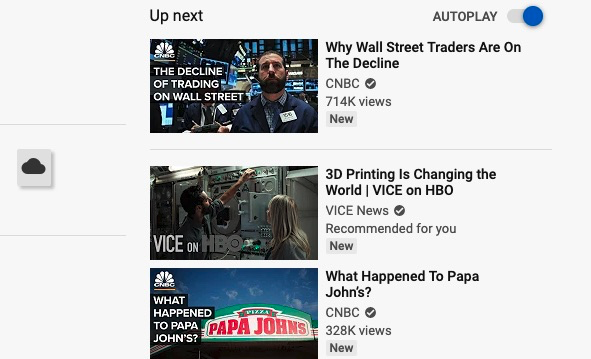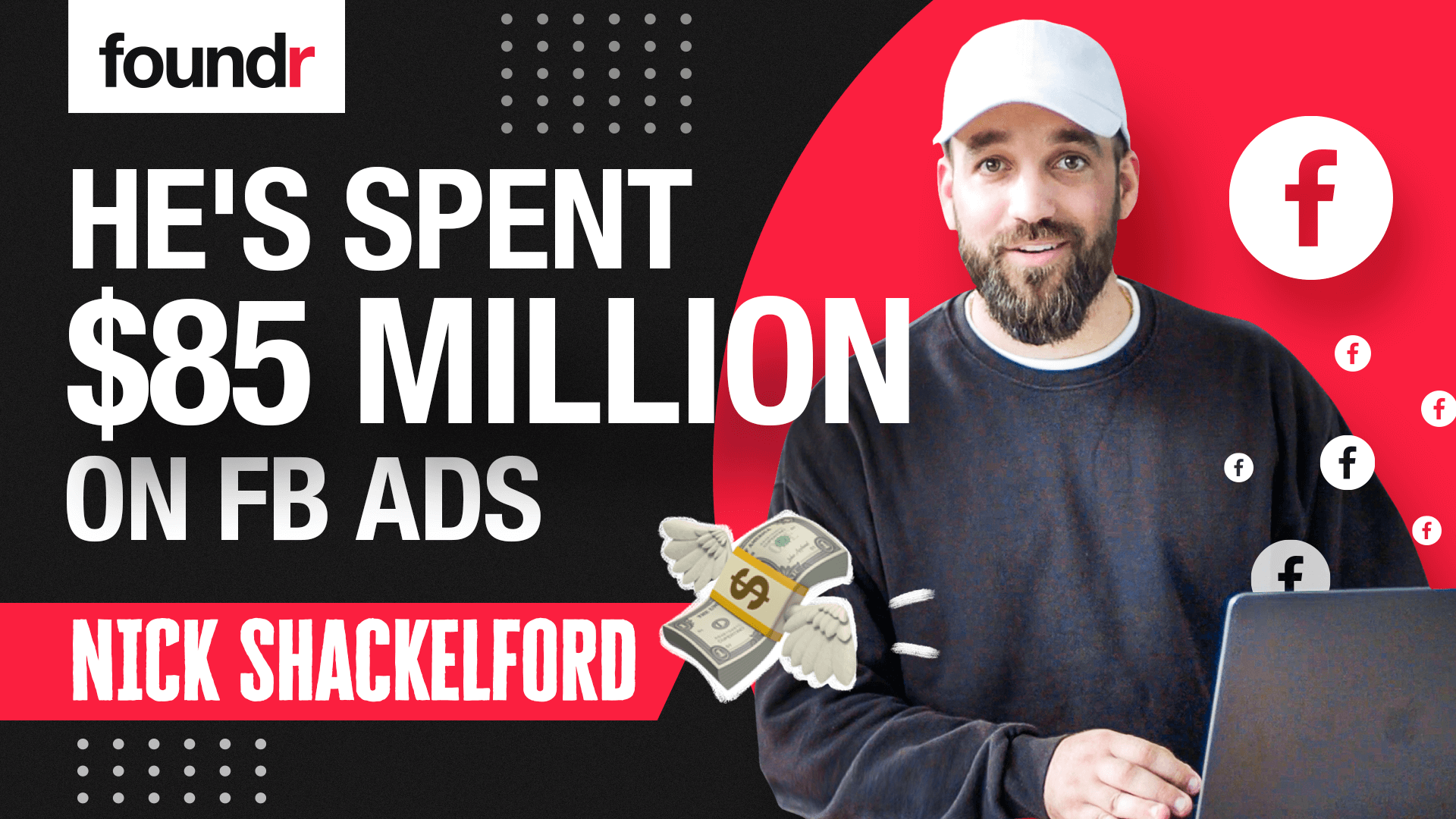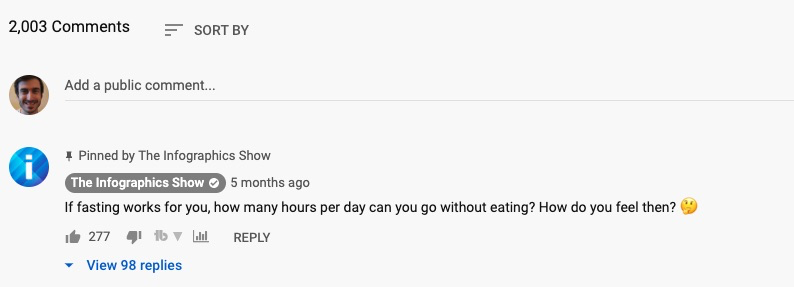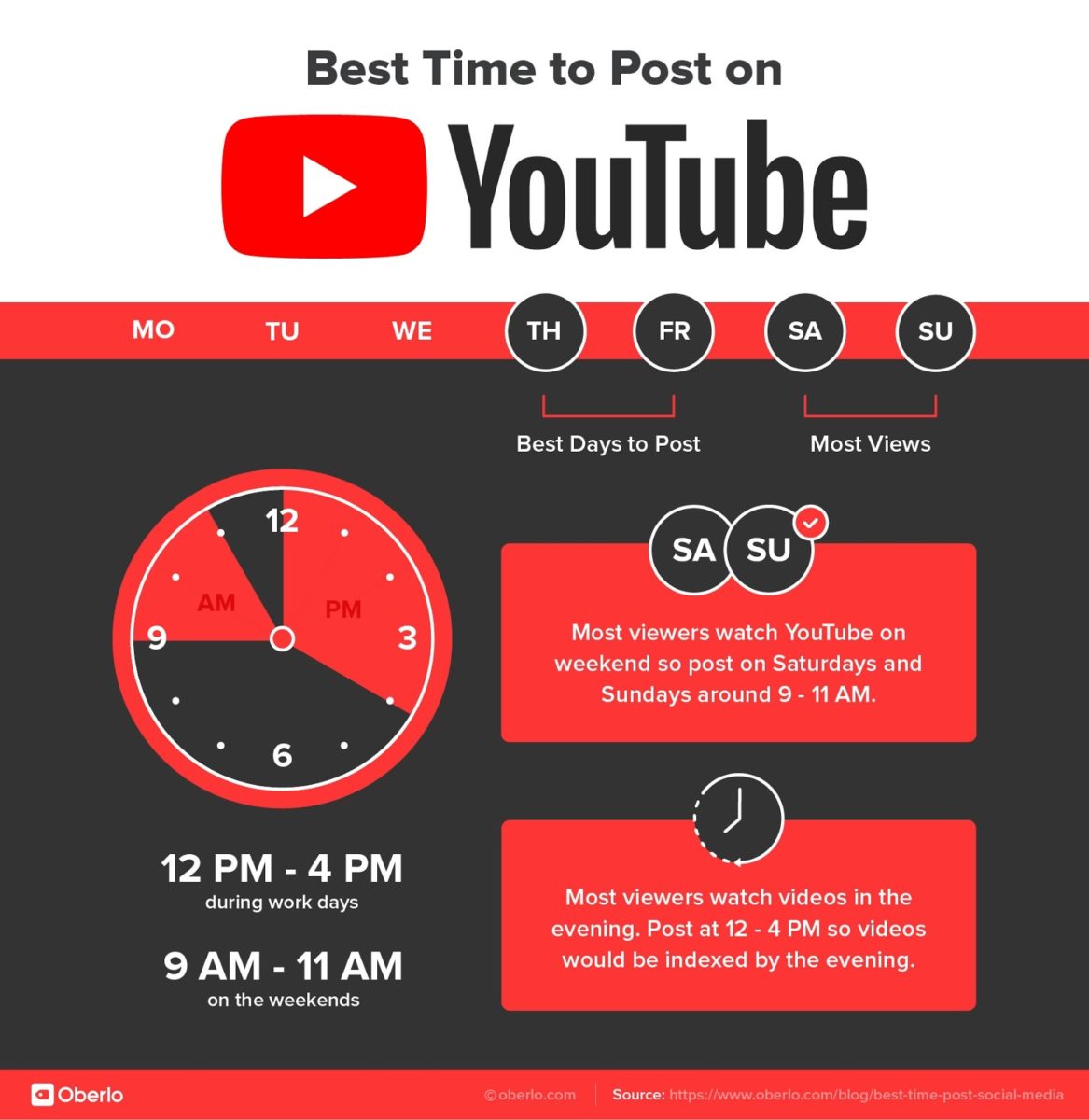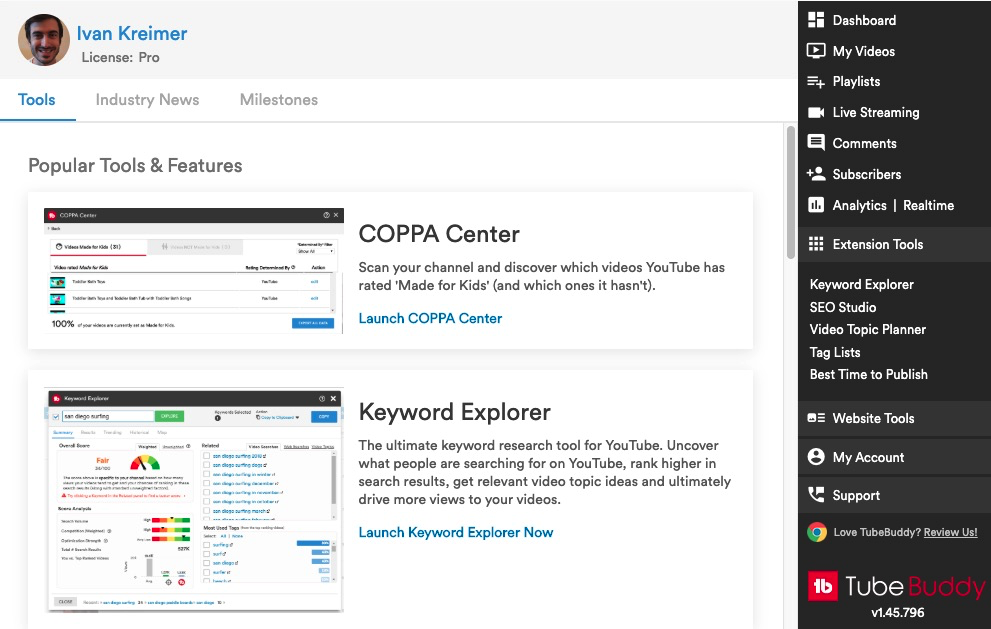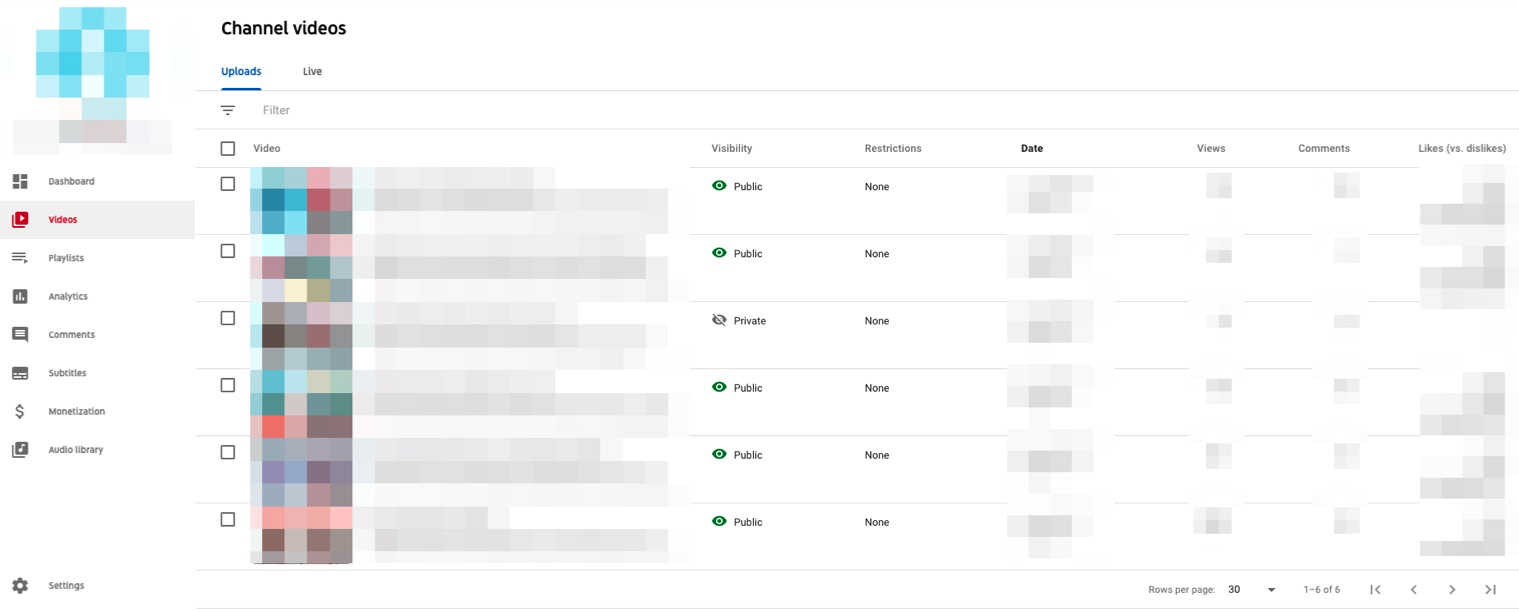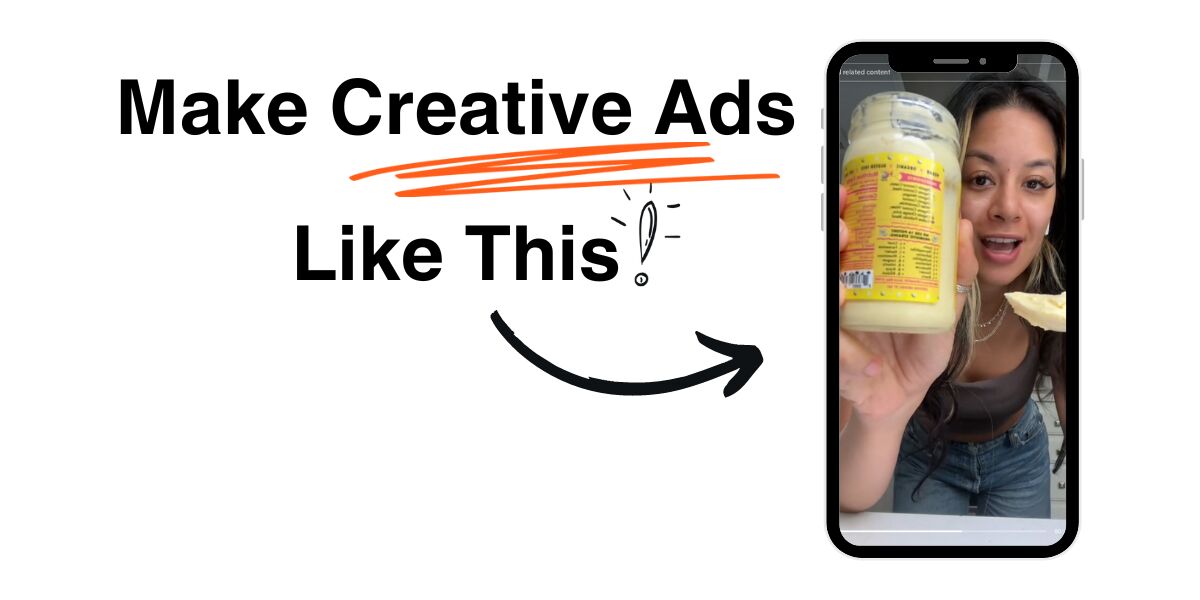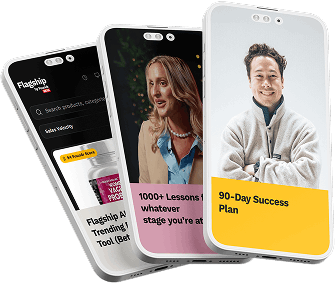So you have a YouTube channel. You have a few dozen—maybe even a few hundred—subscribers. You’re getting some views, but nothing that’s helping you grow your business.
If you’re seeing little to no results from your YouTube channel, then you may need a new marketing strategy—one that helps you grow your account consistently, and one that helps your business make more money.
While this may seem like an impossible feat at times, believe me, it’s worth it. I’m a huge fan of YouTube. I’m constantly watching videos—from your typical funny gym fail compilation to political analysis to interesting business videos and more.
I’ve seen small channels go from 0 to 100,000 subscribers (and beyond) in a few short years. These channels weren’t lucky; they were able to leverage specific tactics that transformed their channels from mere hobbies to profitable businesses. In fact, Foundr itself is one of them. We’ve made YouTube a major priority in our marketing, and seen some real success, with over 76,000 subscribers.
In this article, you will learn how you can create your own YouTube marketing strategy so you can grow your subscriber count and your bank account.
EXCLUSIVE FREE TRAINING: Successful Founders Teach You How to Start and Grow an Online Business
Narrow Your Audience (Like, a Lot)
All successful YouTube channels have one thing in common: they speak to one audience.
If you have ever read an article on marketing, you’ll know that having a “buyer persona,” or an “ideal customer profile,” or a “target audience” is critical to success. Creating one (they are all similar concepts) requires a lot of research—surveys, keyword research, competitive analysis, maybe even some interviews!
But most YouTube channels are even more specific than that. Really, they’re talking to just one single type of viewer. Check out the hundreds of weird and yet wildly popular channels that exist because they appeal strongly to one interest.
You have philosophy channels:
You have history channels:
You even have a channel exclusively dedicated to ambient sound:
While publishing videos around a similar topic helps you connect with your ideal audience, what’s more important is that the content helps that specific audience.
For example, Wendover Productions, one of my favorite channels, speaks to people who like to understand how the airline industry works, in depth. Weird, I know—I didn’t even know I liked that industry as much as I do until I started watching his videos—but I ended up subscribing.
Sam, the founder of the channel, has already branched out to other infrastructure-related industries—trains, ports, etc.—but his focus on the airline industry built a loyal following, including myself.
There’s no other way around it: your channel must start with a clear target in mind. This process is critical, yet time-consuming, so if you want to learn more about this, check out some of these other pieces we’ve written about this topic:
- A Simple 4-Step Process to Creating a Killer Buyer Persona
- How Truly Knowing Your Target Audience Allows You to Work Less and Sell More
- How to Survey Your Audience to Attract Customers, Convert Leads, and Grow Your Business
If you have already done this research for your company or for your overall marketing strategy, you can most likely take your previous strategy and adapt it to YouTube.
When I say “adapt it,” I mean make sure you are speaking to one person as if you know them. Regardless of the tone your brand typically projects, people who watch videos on YouTube aren’t likely looking for an enterprise-style explanation (that is, a boring explanation 😉) about a topic.
As I’ve said in our piece on whether you should start a YouTube channel for your business or not, people go to YouTube to be entertained, educated, or both. All successful channels, including ours, appeal to a more informal audience looking for a lighter approach to their topics of interest.
Bloomberg, one of the leading financial news outlets in the world, is famous for its top-notch writing focused on business managers, executives, and investors. Their YouTube channel, however, while still appealing to this audience, is much more informal and engaging.
Start with the title, “Why We’re Moo-ving Toward Decarbonization.” A bit silly, yes, but fun. And the kind of joke that you will never find on their site. Bloomberg’s content, while still high quality, draws you in without bogging you down with business jargon.
That’s how you adapt an overall marketing strategy to YouTube. Take your existing marketing strategy, tone it down a bit, make it fun, engaging, and interesting, and you will be on your way to making YouTube a key marketing channel.
Focus on the Key Metrics
YouTube isn’t as large as it is by mere coincidence. Google, its owner, has transformed the once purely social site to a money-making machine thanks to integration with its ad network.
Nowadays, Alphabet—the parent company of Google—is estimated to make over $10 billion from YouTube, almost 10% of its total revenue.
For Alphabet, YouTube is truly a gold mine, and they treat it as such. YouTube has set up its ranking and suggestion algorithms so it boosts any video that allows it to make money. The higher the CPM (cost per thousand impressions) companies pay them, the better it is for them.
If you have a video with a high eCPM—that is, the effective CPM, the actual money (ad revenue) you get paid after the 45/55 split between YouTube and your channel—you can bet they will make it popular on their platform.
But it’s more complicated than just that, as YouTube knows that a set of specific factors drive high CPM. It’s these metrics that you’ll need to maximize if you want the platform’s algorithm to amplify your videos.
Your videos’ prominence is actually determined by two key algorithms:
- The search algorithm: That is, the algorithm that defines how your video ranks among others for a given search query
- The recommendation algorithm: That is, the algorithm that defines whether your video is suggested in the bar on the right and at the end of a video
If you have any experience with Google SEO, you may want to put most of your efforts in the former, but given that 70% of YouTube views come through the latter, it’s the recommendation algorithm that you really want to focus on.
According to a paper developed by a team of Google engineers, the key metrics that influence the YouTube algorithm are:
- Click-through rate: The likelihood of someone clicking on your video after seeing it
- Watch time: The total time a user spends watching your videos
- Videos watched: The total number of videos a user has watched from your channel
- Recency: How recent has a user watched a video about this topic
- Search history: The terms a user has searched for in the past
- Watch history: The user’s previously watched videos
- Demographics: The user’s demographic information and location
Other metrics that weren’t mentioned in the report but that are known to also influence your ranking potential include:
- Session time: The time a user spends in the site in one single visit
- Average percentage viewed: The percentage a user spent watching a video
- Engagement: The comments, likes, and shares a video gets
Whenever you create a video, you want to focus on these metrics. That is, you want to:
Build Interest Right Away
Most people on YouTube are a click (or a tap) away from dozens of other videos. If you are going to create videos that look more like a documentary than an engaging story, you will not get people to stick around.
To build interest, tell stories. The way humans engage with just about everything in life is through stories. When opening a video, tell a story—whether that’s 10 seconds or 10 minutes long and whether that’s a story of yours or someone else’s.
The following video on the tragic story of WeWork is a good example. While you know what happens at the end of the video—that WeWork messed up badly and blew a $47 billion valuation—the way the video narrates the story from the first shot until the last makes you want to watch the “how” of the story.
You also want to use engaging titles and thumbnails so people click on your video, something most successful YouTube channels do. For example, the title of this video intrigues the viewer (at least, it intrigued me), while the thumbnail expands the interest even further:
Not surprisingly, this video became incredibly popular in two weeks, overtaking all of the other videos we published in that same month.
Your title and thumbnail are critical for getting people to click on your video, but you have to be careful to set the right expectations. If either promise something that’s not delivered in the video, people will quit watching.
The same will happen if you spend too much time going over small details, or if your video isn’t clear, entertaining, or valuable.
Another good way to build interest is by telling people what the video is about and what they will learn somewhere in the first minute, like the guys of Business Casual do in this video:
There’s no one way to build interest in your videos. Just remember that YouTube users don’t want to see a sermon or a presentation; they want to be entertained.
Make People Spend as Much Time on Site as Possible
A good way to do so is by creating playlists and recommend other related videos both in your cards and in the description.
Foundr has many playlists about our interviews, courses, and different topics that we cover, like email marketing and ecommerce.
But also, as mentioned before, the cards we show at the end of our videos recommending other similar videos encourage our viewers to stay on the site, something that YouTube likes a lot.
Ask People to Comment, Share, and Like Your Videos
This may sound a bit too obvious, but you want to get people to engage with your videos.
All successful YouTube channels ask people to comment on the videos themselves, either by explicitly asking people to like and subscribe, or by adding a small animation somewhere in the video, like you can see that in the video below:
Some channels also pin their first comments to engage people and ask them to answer a question or share their thoughts in relation to the video:
No matter how you ask them, if they do engage, it tells YouTube that people like your video and it should be promoted in their algorithm.
Regardless of whether you want to use YouTube as your main source of revenue—what influencers do—or not, you want to make sure that YouTube is happy with the content you create.
Help them to make money, and they will help you back.
Post Often (But Still Focus on Quality)
The previously mentioned metrics are critical to making your videos popular, but there’s one more important factor that all successful channels have in common: consistency.
Check the popular channels in whatever industry or niche you are in, and you will see they all post at least one video every few days. That includes us:
Ideally, you want to have a well-defined content calendar. Many successful YouTubers have said that publishing often is key to getting your videos promoted in the algorithm.
Think about your YouTube channel as if it were your own TV program. Broadcast TV shows either go live every day or once a week, always at the same time. Not only will YouTube appreciate this kind of consistency, but so will your subscribers. If you have created a good relationship with them, they will want to check for your content every time you publish it.
EXCLUSIVE FREE TRAINING: Successful Founders Teach You How to Start and Grow an Online Business
Publish at the Right Times
No matter how many videos you publish, you should have a clear publishing schedule. But you also need to publish your videos at the right time. Doing so guarantees that your videos will be seen at times where people are most likely to be on the site.
According to research done by Oberlo, the best time to publish on YouTube is between noon and 4 p.m. on Thursdays and Fridays, and between 9 and 11 a.m. on the weekends.
This data can help you when you are just getting started, or if you aren’t planning to publish very often (think once or twice a month).
As you publish more often (once a week or every 10 days), you want to test your own publishing times. It may turn out that your audience doesn’t watch videos on the weekends, or maybe they watch videos only on the weekends.
If you have a channel geared toward busy professionals, they may watch your videos after 6 p.m. A channel that focuses on students, on the other hand, may work best early in the day in the middle of the week.
Take notes of the number of views, comments, and likes your videos get in the first two or three hours after publishing a video. Compare the notes and see what times you get the best reactions.
When you are just getting started and have fewer than 1,000 subscribers, the publishing time may not make much of a difference. But as you start to grow your channel, the faster your videos are viewed by your audience, the bigger the boost they will get from YouTube’s algorithm.
Optimize Your Videos (YouTube SEO)
The advice shared so far has been focused on broader aspects of the YouTube algorithm. Now, let’s talk about the specifics of YouTube SEO.
While this algorithm isn’t as complex as Google’s—to start, there’s no such thing as video link building—you still need to play by its rules.
As explained by Sebastian Beja, one of Mindvalley’s strategies that allowed the company to grow its subscriber base exponentially was to optimize their videos for the search engine.
That includes:
- Doing keyword research
- Making a list of keywords that fit your brand and content
- Optimizing your videos for these keywords
To start, the keyword research can be done through traditional SEO tools like Ahrefs—which offers YouTube keyword research—and SEMrush, or more specific tools like TubeBuddy and VidIQ.
I’ve used Ahrefs and TubeBuddy and they’re both quite good, but I’ve found the latter seems to be a bit better when finding keywords and checking their competitiveness.
As with any keyword research, you want to find search terms that are relevant to your brand and that have high search volumes with medium to low competition.
The competition, however, isn’t easily measured as in Google. The number and quality of the links a page gets has a huge influence on a page’s ultimate ranking. On YouTube, this isn’t the case. Rather, what makes a keyword—and the videos that rank for it—hard to compete for are all the metrics mentioned above, most of which can’t be measured.
First, you want to check the number of likes, comments, and shares a video has. The first two are easy to spot:
Shares can be found with the help of TubeBuddy or VidIQ, both of which provide that information:
The other clear indicator is the number of views. But all the other key metrics like watch time, session time, etc., can’t be analyzed, so you will have to make do with what you know. At the end of the day, that means you will have to take some risks when deciding on a keyword.
After keyword research, you want to add the keywords you found in your videos. To do so, go to YouTube’s Studio, the place where you add and optimize your videos, check your analytics, and more.
There you will see that in every video you can add a title, a description, and tags.
In those three places you want to add your keywords.
Start by adding your keyword to the title.
You want to make sure your titles have the main keyword you have selected, while also inviting people to click. Ask yourself, what do people want to know that my video explains? Then write that down (assuming that the answer also has the keyword in it).
Then, you want to add the description. This can be long and detailed, like a summary of the video, or it can be focused on promoting your site, your products, and other videos you may have.
I like the way Brian Dean at Backlinko writes his descriptions, because as the SEO smart guy he is, he adds his keywords while explaining what he talks about in the video. Any doubts about whether you want to watch his videos are swiftly put to rest.
Finally, at the bottom of the page, you will see a tags section.
Here you want to add five to 10 keywords, so YouTube understands what the video is all about. These tags help to rank for other related keywords and so expanding the potential reach of your videos.
As you can see, YouTube SEO is much simpler and easier to do than Google’s. But despite its simplicity, you still want to pay attention to it, as that can help you get a nice boost to your videos.
For more information on how to do YouTube SEO right, check out the following article where Sebastian Beja explains how Mindvalley optimizes their videos:
How to Get Subscribers on YouTube: Mindvalley’s Method That Tripled Subscribers in 6 Months
Wrap Up
Developing a YouTube marketing strategy isn’t much different than developing one for your blog or your company as a whole. The differences between a YouTube marketing strategy and a more general one lie mostly in your content’s tone and optimizing for YouTube’s algorithm.
As you develop your strategy, it helps to think of YouTube as a search engine in itself. The better your content speaks to this engine—the algorithm, in other words—the higher the chances of having it promote your content to the masses. And once that happens, success follows soon after.
EXCLUSIVE FREE TRAINING: Successful Founders Teach You How to Start and Grow an Online Business

